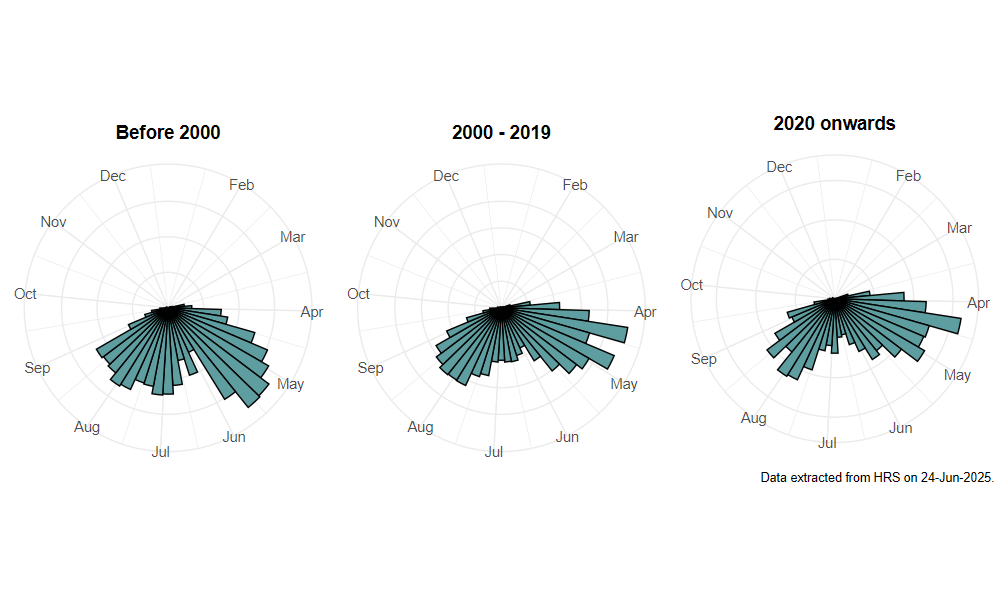Cheilosia pagana (Meigen, 1822)
Identification
Identification difficulty = 3. ![]()
![]() according to Ball & Morris, 20241
according to Ball & Morris, 20241
Biology
The larva develops in pockets of oily decay in the roots of umbellifers. For example, there is a rearing record from decaying roots of Cow Parsley Anthriscus sylvestris (Stubbs, 1980)2. Adults are usually found on flowers, often white umbels such as Cow Parsley and Hogweed Heracleum sphondylium, in clearings and rides in woods, on waste ground, roadsides, hedgerows, rough field-edges, etc. There are at least two generations each year and considerable variation between the sexes and generations, making C. pagana a very variable and confusing species.
Flight period
The following plots show the number of unique records per week excluding those reported to be of immature stages.

Distribution
Extremely widely distributed and often common in all habitats. The maps suggest that this species is less abundant in western and northern areas, which may suggest an association with hotter and drier conditions.

Trends
The following plots show the Frescalo TFactor vs year and a map of the rescaled frequency (all records) for the species.